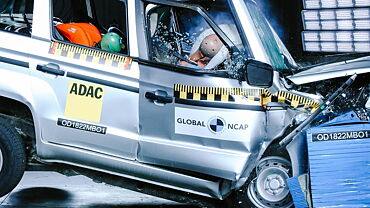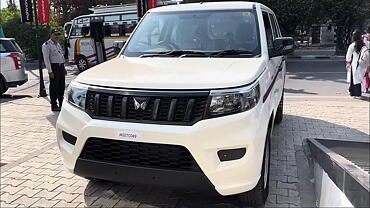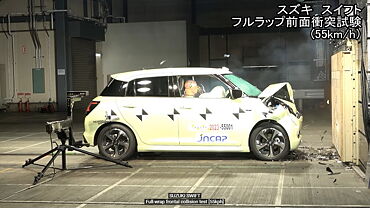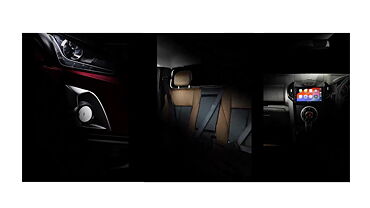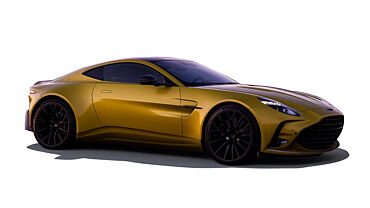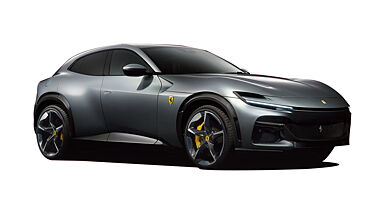Cartrade Comparison Test
Introduction
Not everybody wants a large hatchback and even those who need one would probably be better off with a small crossover. It’s something we hear more often than not and lately, yet it’s the ever popular compact sedans that seem to be gaining momentum rather quickly. To give you an idea, the current largest selling car in India isn’t a run-of-the-mill budget hatch but a somewhat premium compact sedan, namely the new Maruti Dzire.
The new Dzire undoubtedly is a massive improvement over the old car. Not only is it heaps more refined and better looking inside out, it’s also more versatile, thanks to different engine and gearbox options including the highly desirable diesel/auto combo. The big question to answer, then, is whether you should pick one in a jiffy over the VW Ameo diesel automatic – a car that’s surprisingly quick and good to drive.
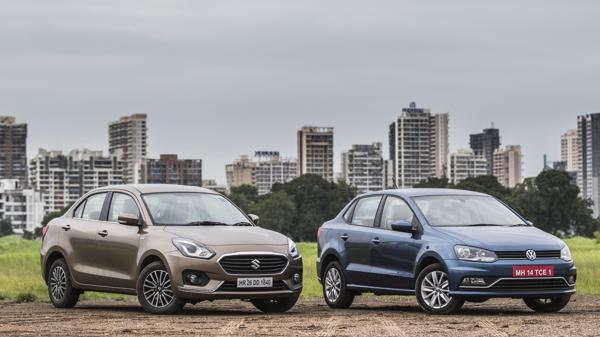
Exterior
The sub-4 metre excise benefits basically delineate the look of compact sedans and the VW is no different. The Ameo, in fact, is exactly what one would picture when they imagine the Polo with a boot. If you are a fan of the crisp and clear lines of the Polo, you will appreciate what VW has done to the Ameo. Besides shaving 35mm off the front bumper to make room for the rear overhang, VW has also altered the roofline for better design flow into the rear glass. But despite all these measures, the Ameo still looks a little uneven when viewed in profile. This is all down to the lack of muscle on the rear bumper that’s wedged onto the car and in sync with the boot-lid and taillights.
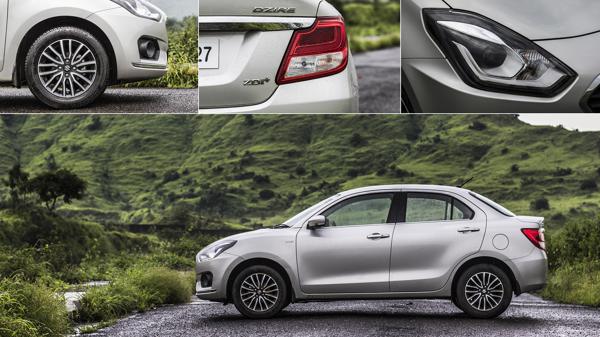
The Dzire, on the other hand, looks surprisingly balanced as a three-box sedan. It’s a big improvement over the old car which was oddly proportioned. Bits like the strong shoulder-line and the well-defined boot line help it look more convincing than the Ameo. Round one goes to the Dzire simply by the virtue of its well-balanced design.
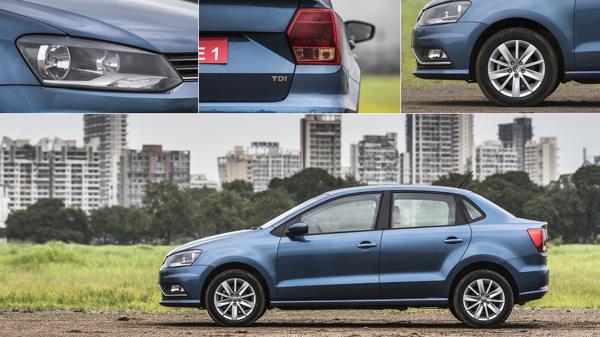
Interior
The Dzire has a more spacious interior here and when you open the front door you will be greeted with most supportive front seats among any car in this class. The plastic quality, however, is not as good as the Ameo but is more consistent than the VW. Also, everything undoubtedly looks more upmarket and premium than the Ameo’s cabin which is now beginning to look a little old school. The latter’s cabin is nearly the same as the Vento which means everything works in a rather precise manner. All the buttons and dials on the dash have a tactile feel and the flat-bottom steering wheel feels great in your hands.
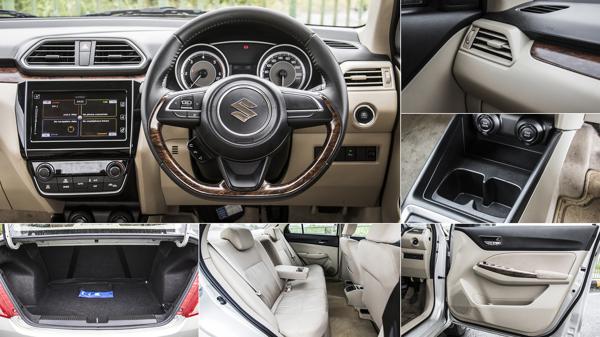
You are seated reasonably high up in both these vehicles and the visibility outside is good too, thanks to the thin A-pillars. In terms of comfort, things are even upfront with adequate thigh and back support. Its only when you move onto the rear seat that you will find some stark differences. The Dzire is the widest car in its class and it feels so – the rear bench is perfectly angled, offers good under thigh support and is spacious enough to accommodate three occupants. You get lots of storage options too including deep pockets on the doors and cup holders over the armrest. The Ameo isn’t the most ideal chauffeur driven car since it’s got the least amount of legroom in this segment. The seat itself is decently supportive but with less legroom and thigh support, the Ameo feels much tighter overall than its rival. The lack of an armrest at the rear and high central tunnel also hamper the overall comfort level.
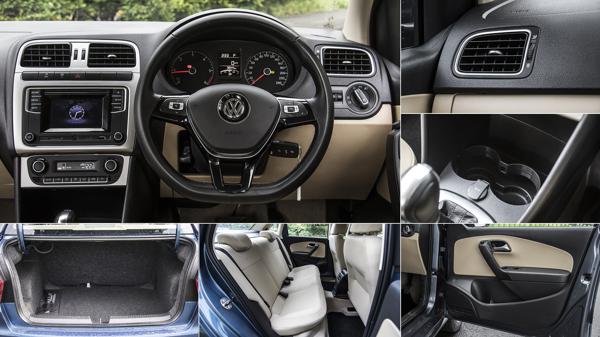
Both these cars are well equipped but each misses out on some features that the other one happens to have. The Ameo lacks features like the start/stop button, key-less go, Apple CarPlay and Android Auto (standard on our test Dzire) but then it also comes with rain sensing wipers, telescopic adjustment for the steering and one touch up/down for all windows, ESP and hill hold control – features that are missing on the Dzire. All in all, it’s the Dzire that takes the cake with its comfy rear seats and better looking interiors.
Performance
So we have established that the Dzire is better looking and more comfortable at the rear than its rival, but what if you prioritize convenience, driving involvement and efficiency?
In this regard, the Ameo has got a clear upper hand. It’s got the bigger 1.5-litre 105bhp/250Nm motor and a frankly brilliant dual clutch automatic gearbox. As for the Dzire, it comes with the same 74bhp/190Nm 1.3-litre Fiat-sourced motor paired to an AMT gearbox. We will start off with the VW. As marked in all our previous tests, the Ameo’s diesel motor is quite audible in the cabin even with all the windows up. Once you are on the move it quietens down tiny bit but that typical diesel clatter is always present in this car. Noise intrusion aside, there is no denying the strong outright performance of this motor once you are past 2,000rpm. The Ameo has 250Nm of torque, all of which is spread out well around the midrange which makes light work of overtaking. Picking up speed from standstill, the Ameo doesn’t feel as punchy because of the DSG’s initial reluctance to transfer torque to the driven wheels, but once revs rise, it pulls strongly. This dual clutch-unit remains super quick nonetheless – in Sport mode, it hangs on to lower gears and doesn’t shift up until 4,800rpm.
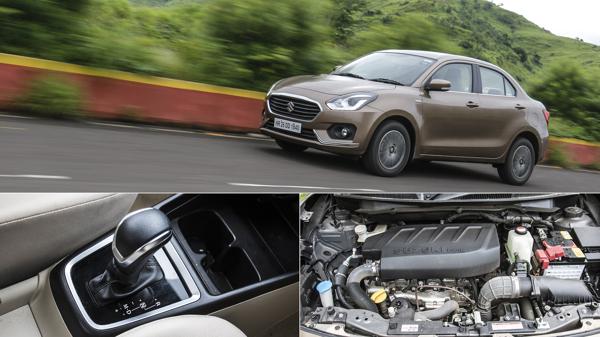
Compared to its predecessor, the new Dzire diesel isn’t any more powerful but it is significantly lighter and that makes all the difference. The engine’s still got noticeable turbo lag below 1,800rpm but overall, the Dzire feels stronger at low revs. It also pulls in a more linear way than before and the improved cabin insulation means you hear it less, too. The 5-speed AMT in here does a good job of changing cogs in the city. It always upshifts in the meat of the torque band while downshifts are surprisingly smooth. It’s only during heavy acceleration that you will get that typical AMT pause in between gearshifts. This effect can be somewhat dampened in manual mode by lifting off the throttle while upshifting.
One thing is clear – the new Dzire is not only cushy in its seats, but also its bump absorption. The ride quality has improved big time and it has turned the Dzire into a sophisticated sedan with a suspension that is quiet and absorbs bumps with aplomb. It now drives over broken roads with utter ease and maintains total composure. At slow speeds, it feels fractionally too firm, but when loaded it offers a near flawless ride. The Ameo is quicker flat out but it definitely rides on the stiffer side. Especially at low speeds, it thumps and doesn’t offer the same level of composure as the Maruti over rough roads. That being said, its stiff setup means it rides with great poise at highway speeds. It’s undoubtedly more composed over undulated roads at triple digit speeds.

Conclusion
Until now the VW Ameo diesel auto has had no rival to be compared with. In our previous tests, the diesel manual version has eclipsed a few compact sedans for quality and performance, but struggled in terms of space and comfort as the auto version here, against a car that has taken a giant leap forward.

The new Maruti Suzuki Dzire may be more expensive than the old car but has a brilliant value overall. With a more upmarket look inside out, better put-together interiors and a massively improved ride, the Dzire is now convincingly the best compact sedan you can buy and this diesel AMT version is a valid alternative to several similarly priced cars.




